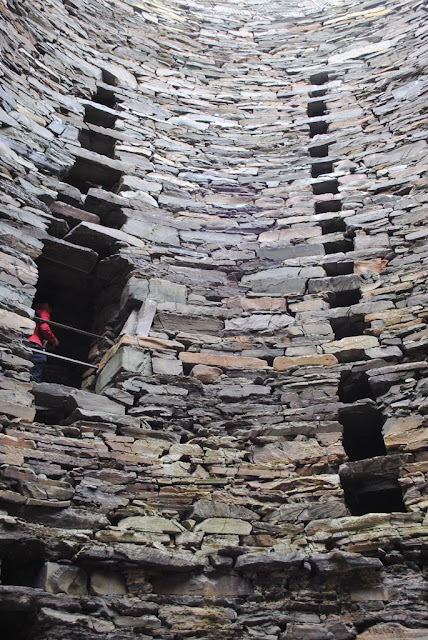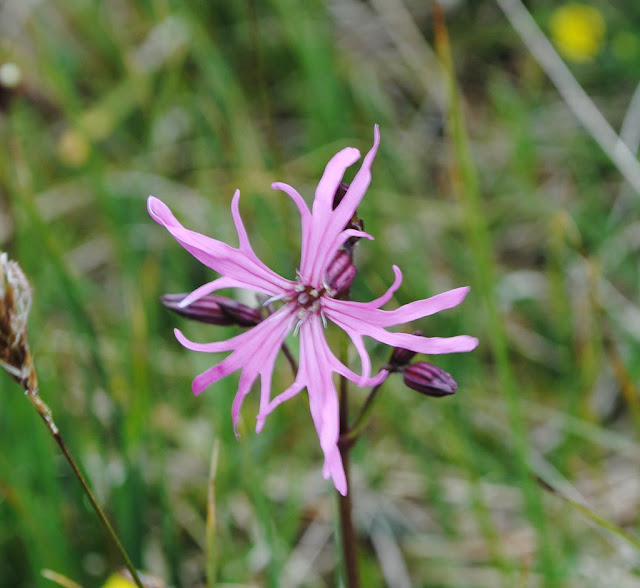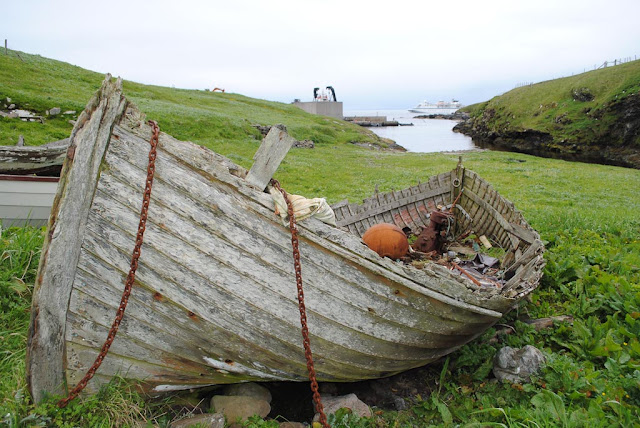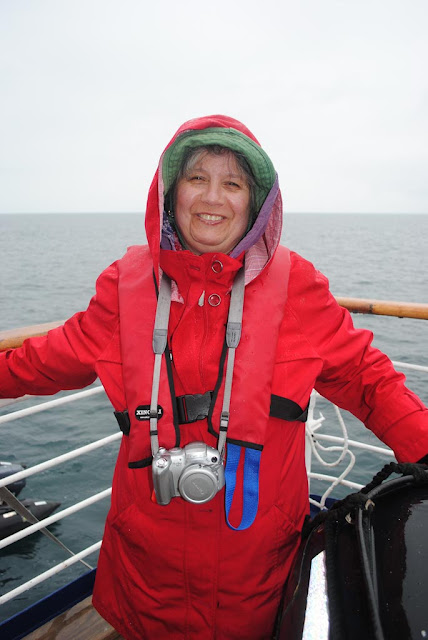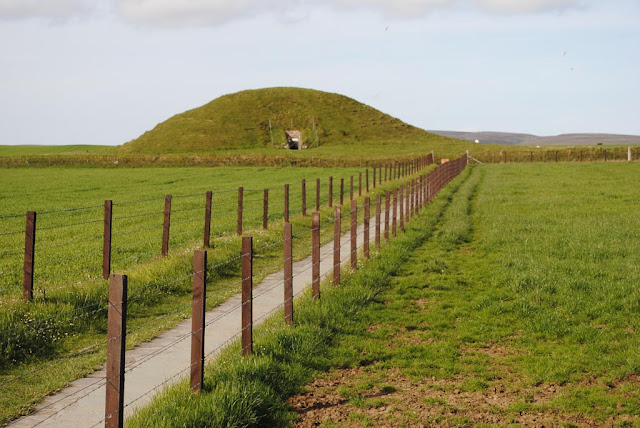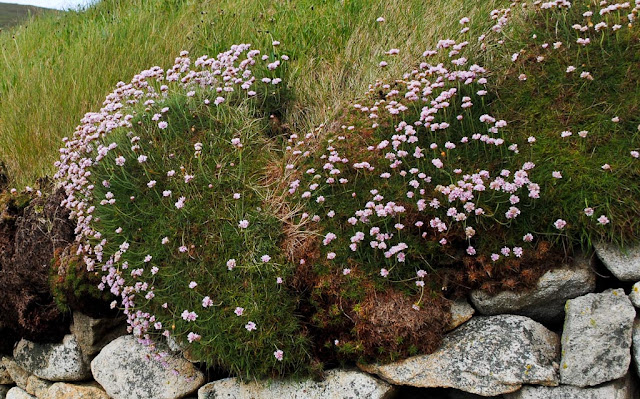Around on the opposite side of the Shetlands we anchored off the incredible Broch of Mousa. A broch is a circular fort from the Iron Age, built entirely of drystone construction. It is thought that they served as a safe retreat when under attack. Most were apparently built during the 1st century AD or BC.
There are thought to be several hundred of them, almost entirely in northern Scotland. Mousa is the most complete of these; most are just a jumble of fallen stones.The drystone construction of these towers, is again amazing. Anyone who has tried to build a drystone wall will understand, but to build one 44 feet high, circular and with hollow walls containing a staircase, seems almost impossible. It certainly would be were it not for the small flat slabs of sandstone on the island. But still, over 40 feet high without any mortar!
The circular shape is amazing inside, with space to sit and a fire ring in the centre. Gaps in the interior walls help reveal the construction and provide light for the stairs as well as galleries with tiny storage chambers.
Yes, it is possible to climb the stairs, built carefully into the hollow walls. To give you an idea of how thick the walls are, the single entranceway passage is 16 feet long!
Of course I had to try climbing the stairs, and came out on top to beautiful views in all directions. You can see the walls, tapered to the top, are still 6 feet thick!
We did get to wander this island for awhile, as only so many people could look inside the broch at one time. There were lots more drystone walls across the landscape.


